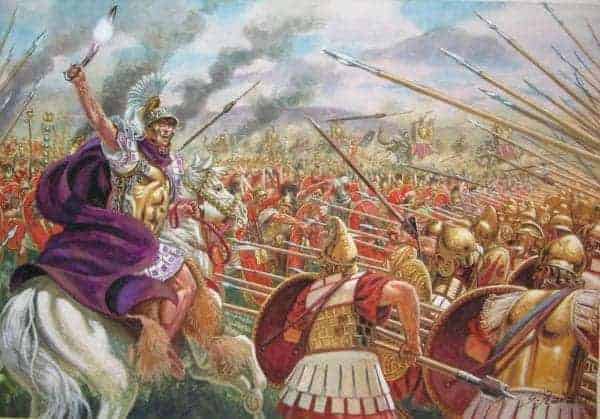A pyrrhic victory occurs when you achieve a win at such a high cost that it is virtually a defeat. While you are victorious in the traditional sense, the heavy toll incurred eliminates the spoils associated with winning. The term is named after King Pyrrhus of Epirus who defeated the Romans in two major battles (Heraclea and Asculum) in 280 BC and 279 BC respectively.
However, he suffered such heavy losses that his campaign ended in failure. After Asculum, he reportedly said that one more victory like that would result in him returning to Epirus alone. In this article, I will look at 6 of the most famous ‘win but actually lose’ scenarios in history including the original Pyrrhic victory.

1 – Battle of Asculum (279 BC)
Pyrrhus was the King of Epirus and became something of an inspiration to the Carthaginian general Hannibal. He took up arms against Rome after answering an appeal from the Greek city of Tarentum as they fought against the Roman Republic. Although he was an excellent commander by all accounts and enjoyed victories against the enemy, the losses he suffered during the Pyrrhic Wars (280-275 BC) were so great that he was unable to follow up on his wins in the long term.
Pyrrhus defeated the Romans at the Battle of Heraclea in 280 BC but lost thousands of men in the process. Both sides geared up for more fighting, and in the following year the Battle of Asculum took place. It was an even more brutal affair than Heraclea as both sides had enormous armies. Indeed, they were evenly matched with approximately 70,000 infantry and 8,000 cavalry apiece. Pyrrhus also had 19 war elephants.
Ancient historians disagree as to the duration of the battle. While Plutarch said it lasted two days, Cassius Dio and Dionysius wrote that it took place over a single day. Regardless, it was a bloody affair, and while the losses suffered by both sides paled into comparison with casualties during the Second Punic War some 60 years later, the losses were heavy enough to cripple Epirus and cause its king to declare that another such battle would ruin him.
Pyrrhus knew that he couldn’t win a war against Rome, so he answered another appeal; this time from Greek city states in eastern and southern Sicily who needed help against Carthage. He campaigned for three years but angered his southern Italian allies who believed he abandoned them. After treating Greek city states poorly in his quest for more manpower, Pyrrhus had to deal with a revolt and returned to southern Italy. Eventually, he fought Rome one last time at the Battle of Beneventum in 275 BC and suffered defeat. The king died in a skirmish at Argos in 272 BC.

